| 13 August |
• yesterday • tomorrow |
| Hippolytus of Rome (Optional Memorial) |
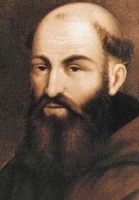
• Carlo Domenico Cristofori
• Marco D'Aviano
• Marco of Aviano
Son of Marco Pasquale Cristofori and Rosa Zanoni. Educated at home and at the Jesuit school in Gorizia, Italy. He was especially fascinated with stories of the saints. At age 16 he left home to walk to Crete, where Venice was at war with the Ottoman Turks; he planned to preaching Christianity to Muslims and take his chance on martyrdom. After a few days of hiking, he stopped at the Capuchin house in Capodistria (modern Kopar, Slovenia), seeking food and shelter. The brothers took him in, fed him, prayed with him, and advised him to return home, which he did.
His time at the monastery affected Carlo deeply, and in 1648 he became a Capuchin novice at Conegliano, Italy. He made his formal vows in 1649, taking the name Mark. Ordained on 18 September 1655 at Chioggia, Italy. He lived several years in the cloister, but in 1664 he was called to missionary duty, preaching throughout Italy. Elected superior of the Belluno, Italy house in 1672. Elected superior of the Oderzo, Italy house in 1674.
On 8 September 1676, while preaching at a monastery in Padua, Italy, Mark prayed over Sister Vincenza Francesconi, who had been bed-ridden for 13 years; she was miraculously healed. Word spread, and while he continued preaching, Mark was soon beseiged by people seeking miracles; many were healed, and many were brought to the faith.
His fame led his to become counselor on religious and political matters to Leopold I, emperor of Austria for nearly two decades. Papal legate and Apostolic Nuncio to Austria for Pope Blessed Innocent XI. He secured the release of Vienna from the Ottoman Turks on 12 September 1683. Travelled with the army from 1683 to 1689 as advisor and chaplain to soldiers of all ranks. He helped negotiate the liberation of Buda on 2 September 1686, and of Belgrade on 6 September 1688. He worked as a peacemaker throughout Europe, bringing unity to warring Catholic powers, educating them on the threat posed by the Ottoman's - and never letting them forget that all wise counsel was given by God.
Legend has it that when the Ottomans fled before the European army, they left behind a lot of their strong, bitter coffee. The Christian soldiers, to make this liberated coffee more palatable, mixed it with honey and milk; they named the drink after Mark's Order, the Capuchins, and thus cappuccino was created.
17 November 1631 at Aviano, Italy as Carlo Domenico Cristofori
13 August 1699 of cancer in Vienna, Austria
27 April 2003 by Pope John Paul II
God knows that the scope of all of my works is only to do His will. My only interest is God's glory and the good of souls. I am always an obedient son of Holy Mother Church and am ready to shed my blood and give my life for Her. - Blessed Mark of Aviano
Blessed Mark of Aviano shone with holiness as his soul burned with a longing for prayer, silence and adoration of God's mystery. This contemplative who journeyed along the highways of Europe was the centre of a wide-reaching spiritual renewal, thanks to his courageous preaching that was accompanied by numerous miracles. An unarmed prophet of divine mercy, he was impelled by circumstances to be actively committed to defending the freedom and unity of Christian Europe. Blessed Mark of Aviano reminds the European continent, opening up in these years to new prospects of cooperation, that its unity will be sounder if it is based on its common Christian roots. - Pope John Paul II in his homily at the beatification of Blessed Mark of Aviano
https://catholicsaints.info/blessed-mark-of-aviano/
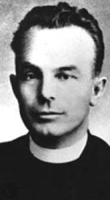
• Jacob Gapp
• Jakub Gapp
Seventh child in the working class family of Martin Gapp and Antonia Wach. Received a basic education in his native town, then entered the Franciscan high school in Hall in 1910. Austrian soldier on the Italian front from May 1915 till he was wounded in 1916; received the silver medal of Courage Second Class. On 4 November 1918 he became a prisoner of war in Riva del Garda; released on 18 August 1919.
After the War, he entered the Marianist novitiate at Greisinghof, Upper Austria in 1921. Assigned to the Marian Institute in Graz as a teacher and sacristan for four years, while preparing for the seminary. Made his profession at Antony, France on 27 August 1925. In September 1925 Jakob entered the International Marianist Seminary in Fribourg, Switzerland. Ordained by Bishop Marius Besson at Saint Nicholas Cathedral in Fribourg on 5 April 1930.
Back in Austria he worked as a teacher, director of religious education, and chaplain in Marianist schools till 1938. Economic conditions were terrible; Father Gapp collected food and other necessities from students, and gave his own heating coal to the poor.
Nazism was on the rise in Germany and Austria. Father Gapp saw the incompatibility of Nazism and Christianity, and began preaching this truth. When German troops arrived in Austria in March 1938, he left Graz. His superiors sent him home as they believed his anti-Nazi preaching would bring on the wrath of the Reich; but his institutions were already marked for destruction.
In Tirol he enjoyed the last moments of peace in his life. He was an assistant pastor in Breitenwang-Reutte for two months when the Gestapo, in October 1938, ordered him not to teach religion. Father Gapp taught uncompromising love for all men and women without reference to nationality or religion, and that "God is your God, not Adolf Hitler." In a sermon on 11 December 1938 he defended Pope Pius XI against the attacks of the Nazis, and directed the faithful of the parish to read Catholic literature instead of Nazi propaganda. He was advised to leave the country.
He escaped to Bordeaux, France, where he worked as a chaplain and librarian. In May 1939 he went to Spain where he served in the Marianist communities at San Sebastian, Cadiz and Valencia. The Gestapo followed him, and in 1942 he received word of two people across the border in France who claimed to be Jews fleeing from Nazis in Berlin, Germany, and who wanted instruction in Catholicism. When he crossed into France to minster to them, they abducted him.
Father Gapp was arrested on 9 November 1942 in Hendaye, France, and brought to Berlin. On 2 July 1943 he was condemned to death for speaking against the Reich. Burial of his remains were denied as the Nazis feared he would be seen as a martyr, and his grave become a site of silent demonstration and rebellion. On the afternoon of 13 August 1943 he was advised he would executed that night. He wrote two moving farewell letters, and was martyred.
26 July 1897 at Wattens, Tyrol, Austria
• guillotined at 7.08pm 13 August 1943 at Plotzensee Prison, Berlin, Germany
• remains used for research at the Anatomical-Biological Institute of the University of Berlin
24 November 1996 by Pope John Paul II
Action is more important than theory! - Father Gapp
https://catholicsaints.info/blessed-jakob-gapp/
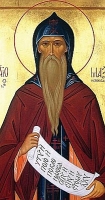
• Maximus of Constantinople
• Maximus Confessor
• Maximus the Theologian
• Maximus Homogoletes
Born to the Byzantine nobility. Chief secretary to Emperor Heraclius, a post he resigned to become a monk at Chrysopolis. Spiritual student of Saint Sophronius. Abbot of Chrysopolis. His community broke up in 626 due to Persian invasion. Maximus fled to Alexandria, Egypt, then to Carthage, and then Rome, Italy. Worked with Pope Martin I against Monothelist heresy, and attended the Lateran Council of 649.
Falsely accused of treason due to his defense of orthodox Christianity, he was arrested and forcibly returned to Constantinople. He spent years in prison misery, and at age 82 received his final sentence: he was flogged, his tongue cut out, his right hand cut off, he was exhibited in the streets as an example to the people, and was sent into exile at Skhemeris on the Black Sea, where he died soon after. He is best remembered today for his mystical, ascetical, and theological writings, and for his steadfast belief that the purpose of all history was the Incarnation.
c.580 at Constantinople
• 13 August 662 at Batum near the Black Sea of natural causes
• strange lights reported hovering near his tomb
The extremities of the earth, and all in every part of it who purely and rightly confess the Lord look directly towards the most holy Roman Church and its confession and faith, as it were to a sun of unfailing light, awaiting from it the bright radiance of the sacred dogmas of our Fathers according to what the six inspired and holy councils have purely and piously decreed, declaring most expressly the symbol of faith. For from the coming down of the incarnate Word amongst us, all the Churches in every part of the world have held that greatest Church alone as their base and foundation, seeing that according to the promise of Christ our Saviour, the gates of hell do never prevail against it, that it has the keys of a right confession and faith in Him, that it opens the true and only religion to such as approach with piety, and shuts up and locks every heretical mouth that speaks injustice against the Most High. - Saint Maximus To harbor no envy, no anger, no resentment against an offender is still not to have charity for him. It is possible, without any charity, to avoid rendering evil for evil. But to render, spontaneously, good for evil - such belongs to a perfect spiritual love. - Saint Maximus
https://catholicsaints.info/saint-maximus-the-confessor/
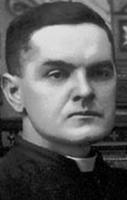
Son of Irish immigrants. Studied at the Saint-Hyacinthe's Seminary in Saint-Hyacinthe, Quebec, Canada beginning in 1868; finished his studies at Saint Mary's Seminary in Baltimore, Maryland, in 1873. Before he could be ordained, however, his father died, and Michael returned home to support the family. Ordained on 22 December 1877 by Archbishop Joseph Gibbons at the Basilica of the National Shrine of the Assumption of the Blessed Virgin Mary. Assistant pastor at Saint Mary's Church, New Haven, archdiocese of Hartford, Connecticut. With a small group of parishioners, he founded the Knights of Columbus on 2 February 1882; today the organization has nearly two million members and contributes tens of millions of dollars to charity each year.
12 August 1852 in Waterbury, Connecticut
• 14 August 1890 at Thomaston, Connecticut of pneumonia, possibly related to tuberculosis
• re-interred in Saint Mary's Church, New Haven Connecticut in 1982
• 31 October 2020 by Pope Francis
• the beatification recognition was celebrated at the Cathedral of Saint Joseph in Hartford, Connecticut
• the beatification miracle involved the in-utero healing of a baby who's fluid retention was causing swelling that would have damaged his heart
SaintCast, by Paul Camarata
God, our Father, protector of the poor and defender of the widow and orphan, you called your priest, Father Michael J. McGivney, to be an apostle of Christian family life and to lead the young to the generous service of their neighbor. Through the example of his life and virtue may we follow your Son, Jesus Christ, more closely, fulfilling his commandment of charity and building up his Body which is the Church. Let the inspiration of your servant prompt us to greater confidence in your love so that we may continue his work of caring for the needy and the outcast. We humbly ask that you glorify your servant Father Michael J. McGivney on earth according to the design of your holy will. Through his intercession, grant the favor I now present (here make your request). Through Christ our Lord. Amen. Our Father, Hail Mary, Glory be. – Prayer for the Canonization of Father Michael Joseph McGivney
https://catholicsaints.info/blessed-michael-joseph-mcgivney/
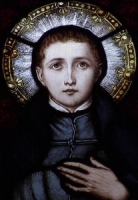
Jan Berchmans
Son of a shoemaker, and one of five children, three of whom entered religious life. John had great devotion to his position as an altar boy. He spent much of his time caring for his mother, who was in poor health. Jesuit noviate in 1616, deciding to become a Jesuit after reading the life of Saint Aloysius Gonzaga. Student at the Jesuit College at Malines, Belgium. Studied philosophy in Rome. John had a dream of helping and teaching multi-lingual migrants, and he studied all the chief languages of Europe. He wanted to work in China after ordination. He died of unknown causes following his participation in a public debate defending the faith, and while clutching his rosary, crucifix, and rules of his order; he did not live to be ordained.
John Berchmans was not noted for extraordinary feats of holiness or austerity, nor did he found orders or churches or work flashy miracles. He made kindness, courtesy, and constant fidelity an important part of his holiness. The path to holiness can lie in the ordinary rather than the extraordinary.
13 March 1599 at Driest, Brabant, Belgium
• 12 August 1621 at Rome, Italy
• relics at Saint Ignatius Church, Rome
15 January 1888 by Pope Leo XIII
• altar boys
• altar girls
• altar servers
• Oblate novices
• young people
• standing with hands clasped, holding his crucifix, his book of rules, and his rosary
• the Rule of Saint Ignatius, a cross, and rosary
Saint John Berchmans, my most loving patron, seraph of charity, I rejoice with you at the ardent fire of chairty, which kept your pure and innocent heart always at peace and united to God; I humbly pray thee, obtain for me such ardor of divine love that it may remove from my heart every inordinate earthly affection, destroy my evil tendencies, and cause me in all my actions to be prompted by the purest intention: All for the greater glory of God!
https://catholicsaints.info/saint-john-berchmans/

Cassiano
Schoolmaster at Imola, Italy who taught hand-writing, and sometimes talked about Christianity. During one of the imperial persecutions he was ordered to sacrifice to pagan gods; he refused. He was turned over to his pagan students who were ordered to execute him; they did. Martyr.
• tied to a post, tortured and stabbed to death with iron styles, the device used as a pencil on wax tablets, at Imola, Italy c.304
• buried in the catacombs in Rome, Italy
• a sepulchre was built over his place of burial later in the 4th century
• in the 5th century, a basilica was built in place of the sepulchre
• relics transferred to the crypt of the cathedral in Imola in 1175
• relics enshrined in a silver and copper reliquary in Imola c.1405
• from 1577 to 1914, the relics were annually processed through Imola
• some relics (4 pieces of the post to which he was tied) transferred to Bressanone, Italy in 1684
• parish clerks
• secretaries
• stenographers
• students
• teachers
•
• Mexico City, Mexico
• Las Galletas, Tenerife, Spain
•
dioceses
• Bolzano-Bressanone, Italy
• Brixen, Italy
•
locations in Italy
• Bibbiena • Comacchio • Imola • Laterina • Macherio • San Casciano dei Bagni • San Casciano in Val di Pesa • San Cassiano a Vico • San Cassiano di Controne • San Cassiano di Moriano • Trecate
• man tied to a post and surrounded by children
• man being stabbed by children
• paper, pen, styles or other writing instruments
https://catholicsaints.info/saint-cassian-of-imola/
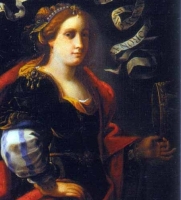
Radegund, Rhadegund, Radegonde, Radigund, Radegundes
Princess of Thuringia. Queen of France. Daughter of the pagan king Berthachar of Thuringia. She was given at age 12 to Clotaire I as a hostage after he conquered her father's army in 531. The girl converted to Christianity during her captivity, and 540 she was married against her will to Clotaire who then badly mistreated her, partly for being childless. In 555 she finally left him and took the veil from Saint Medard. Deaconess at Noyon, France. She founded the convent of the Holy Cross, Poiters, France; among the many relics in its chapel was a piece of the True Cross. She placed the house under the Rule of Saint Caesarius of Arles, and lived there her remaining 30 years; it became a center of scholarship. Spiritual student of Saint John of Chinon. Friend of Saint Fortunatus, who composed his hymn Vexilla Regis in her honor. She was very active in the affairs of the Church and civil politics, and gained a repuation as a peacemaker. Jesus College in Cambridge was originally dedicated to her.
518 in Erfurt, Saxony
• 13 August 587 in Poitiers, France of natural causes
• relics burned by Calvinists in 1562
• against drowning
• against fever
• against leprosy
• against scabies
• against scabs
• against the death of parents
• against ulcers
• difficult marriages
• potters
• weavers
• Poitiers, France
receiving an apparition of Our Lord
https://catholicsaints.info/saint-radegunde/

Became a monk as a very young man, possibly at Glastonbury Abbey. Missionary who worked with Saint Boniface. He arrived in Germany c.734. Abbot of the monastery of Hersfeld, Hesse. Spiritual teacher of Saint Sturmi of Fulda. Abbot of Ohrdruf, Thuringia in 737. He later retired to Hersfeld where he spent his remaining days as a prayerful monk. Known as a very quiet man, and a miracle worker.
c.675 in England
• c.746 at Hersfeld, Germany of natural causes following a long illness
• buried at Fritzlar, Germany
• relics moved to Büraburg Castle in 774 to save them from invading Saxons
• relics transferred to Hersfeld abbey in 780
• relics re-interred in a church built for them in the abbey in 850
• the church burned in 1037
• surviving relics re-interred in the new church in 1144
• the church burned in 1761, destroying the remaining relics
Bad Hersfeld, Germany
https://catholicsaints.info/saint-wigbert-of-fritzlar/
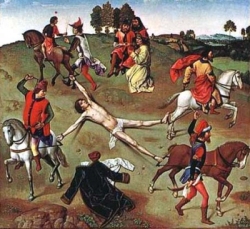
• Hippolytus of Porto
• Ippolito...
Third century imperial Roman soldier assigned to guard Christian prisoners. Converted by them to the faith. Martyred for assisting at the burial of some his martyred charges.
Due to a clerical error, Hippolytus was inadvertently listed on some calendars as two people, Hippolytus of Rome and Hippolytus of Porto. The second entry had the feast day of 22 August. This problem was corrected in the calendar revision of 1969.
• dragged or torn to death by horses outside Rome, Italy
• collected body fragments were buried along the Via Tiburtina, Rome
• horses
• prison guards, officers and workers
• Bibbiena, Italy
• Laterina, Italy
horses
https://catholicsaints.info/saint-hippolytus-of-rome/
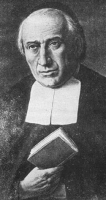
• Benilde
• Peter Romancon
• Pierre Romancon
29 January (De La Salle Brothers)
Educated by the De La Salle Brothers. An excellent student, he was a part-time teacher by age 14. Joined the De La Salle Brothers at age 14, entering his noviate on 10 February 1820, and taking the name Benildus. Teacher at several schools. Director of a community at Saugues in southern France in 1841. He founded a school there, and remained with it the rest of his life. Taught classes and catechism, visited the sick, and attracted many to the religious life; over 200 of his students became De La Salle brothers. Known for his sanctity, effective teaching, generosity to students, Brothers, and townspeople, and for the excellent reputation of his school.
14 June 1805 at Thuret, France as Pierre Romancon
13 August 1862 at Saugues, France of natural causes
29 October 1967 by Pope Paul VI
https://catholicsaints.info/saint-benildus/
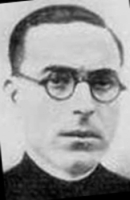
Juan of the Sacred Hearts
Son of Jose Agramunt and Antonia Riera. Began his Piarist novitiate in August 1922, making his solemn vows on 15 February 1928. Priest, ordained on 28 December 1930. Taught at Albacete, Spain. Transferred to the College of Castellón de la Plana in September 1935. When the persecutions of the Spanish Civil War began, he went into hiding at the home of his parents in Almazora, Spain, but was arrested by anti–Catholic militants on 7 August 1936. Martyr.
14 February 1907 in Almazora, Castellón, Spain
shot during the night of 13 to 14 August 1936 in Pla de Museros, Almazora, Castellón, Spain
1 October 1995 by Pope John Paul II
https://catholicsaints.info/blessed-juan-agramunt-y-riera/
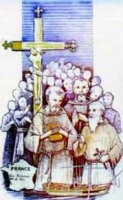
Priest in the diocese of Limoges, France. Imprisoned on a ship in the harbor of Rochefort, France and left to die during the anti-Catholic persecutions of the French Revolution. One of the Martyrs of the Hulks of Rochefort.
26 July 1747 in Point-Saint-Martin, Haute-Vienne, France
13 August 1794 aboard the prison ship Deux-Associés, in Rochefort, Charente-Maritime, France
1 October 1995 by Pope John Paul II
https://catholicsaints.info/blessed-pierre-gabilhaud/

Daughter of Saint Elizabeth of Hungary and Louis IV, landgrave of Thuringia. Educated at Altenberg Abbey. Cistercian nun at Altenberg. Chosen abbess when very young, and led the house for 50 years.
1227
1297 of natural causes
• 1311 by Pope Clement VI (cultus confirmed and limited to the Altenberg monastery)
• 11 July 1729 by Pope Benedict XIII (cultus confirmation and extended to the entire Order)
https://catholicsaints.info/blessed-gertrude-of-altenberg/
• Herulph of Ellwangen
• Hariolfus of...
Born to the nobility, the son of the Count of Ellwangen (part of modern Germany). Benedictine monk at the abbey of Saint Gall in Switzerland. Founded Ellwangen Abbey, diocese of Augsburg, Germany, in 764. Bishop of Langres.
785 of natural causes
https://catholicsaints.info/saint-herulph-of-langres/
Priest in the Vicariate Apostlic of England. Martyred in the persecutions of Queen Elizabeth I for the crime of being a priest.
Menthorpre, North Yorkshire, England
hanged on 13 August 1595 in Warwick, Warwickshire, England
15 December 1929 by Pope Pius XI
https://catholicsaints.info/blessed-william-freeman/
• Chnorhali
• Nerses the Gracious
Uncle of Saint Nerces Lambronazi. Worked for the union of the Greek and Armenian churches, and of the Armenian church with Rome. Bishop of the Armenians in 1166. Noted poet in his native language.
1102
1173
https://catholicsaints.info/saint-nerses-glaietsi/
Poor servant girl in 13th century Augsburg, Germany who made a personal vow of devotion to God. Known for her piety and charity to those even poorer than herself, she developed a ministry to lepers and other outcasts in her rural area.
attacked by wolves while en route to care for some sick people
https://catholicsaints.info/saint-radegund/
Andeol of Lyon
When Saint Justus of Lyon left France to become a hermit in Egypt, Father Antiochus was sent to talk him into coming back. He failed. When he returned home, Antiochus was chosen as the new bishop of Lyons.
5th century
https://catholicsaints.info/saint-antiochus-of-lyon/
Friend and spiritual student of Saint Acacius. Priest. Papal legate. Imprisoned and exiled for failure to adopt the Monothelite heresy. Martyr.
c.662 from the abuse suffered while imprisoned
https://catholicsaints.info/saint-anastasius-the-priest/
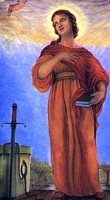
Martyr.
beheaded outside Rome, Italy
• nursing mothers
• wet nurses
https://catholicsaints.info/saint-concordia/
Friend and spiritual student of Saint Acacius. Monk. Imprisoned and exiled for failure to adopt the Monothelite heresy. Martyr.
c.662 from the abuse suffered while imprisoned
https://catholicsaints.info/saint-anastasius-the-monk/
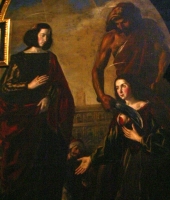
Helena
Nun. Martyr.
c.304 at Burgos, Spain
https://catholicsaints.info/saint-helen-of-burgos/
Fourth-century convert, brought to the faith by Saint Pontian of Todi. Bishop of Todi, Italy. Martyred in the persecutions of Maximian Herculeus.
relics in Todi, Italy
https://catholicsaints.info/saint-cassian-of-todi/
Founded the monastery at Mairé, France. Later in life he retired to live as a hermit in Chaulnay, France.
587
https://catholicsaints.info/saint-junian-of-maire/
Ludolph
Abbot of New Corvey Abbey in Westphalia, Germany from 971 to 983.
983
https://catholicsaints.info/saint-ludolf/
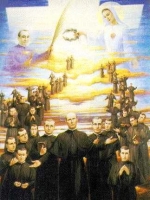
• Blessed Agustín Viela Ezcurdia
• Blessed Alfons Miquel Garriga
• Blessed Alfons Sorribes Teixidó
• Blessed Antolín Calvo y Calvo
• Blessed Antoni Dalmau Rosich
• Blessed Atanasio Vidaurreta Labra
• Blessed Eduardo Ripoll Diego
• Blessed Esteve Casadevall Puig
• Blessed Eusebi Maria Codina Millà
• Blessed Felipe de Jesús Munárriz Azcona
• Blessed Francesc Roura Farró
• Blessed Francisco Castán Meseguer
• Blessed Gregorio Chirivas Lacamba
• Blessed Hilario Llorente Martín
• Blessed Jaume Falgarona Vilanova
• Blessed Joan Baixeras Berenguer
• Blessed Joan Codinachs Tuneu
• Blessed José Amorós Hernández
• Blessed José Blasco Juan
• Blessed José Figuero Beltrán
• Blessed José Pavón Bueno
• Blessed Josep Maria Badía Mateu
• Blessed Josep Ormo Seró
• Blessed Josep Ros Florensa
• Blessed Juan Díaz Nosti
• Blessed Juan Echarri Vique
• Blessed Juan Sánchez Munárriz
• Blessed Leoncio Pérez Ramos
• Blessed Lluís Escalé Binefa
• Blessed Lluís Lladó Teixidor
• Blessed Lluís Masferrer Vila
• Blessed Manuel Buil Lalueza
• Blessed Manuel Martínez Jarauta
• Blessed Manuel Torras Sais
• Blessed Miquel Masip González
• Blessed Nicasio Sierra Ucar
• Blessed Pedro García Bernal
• Blessed Pere Cunill Padrós
• Blessed Rafael Briega Morales
• Blessed Ramon Illa Salvia
• Blessed Ramon Novich Rabionet
• Blessed Salvador Pigem Serra
• Blessed Sebastià Riera Coromina
• Blessed Sebastián Calvo Martínez
• Blessed Secundino Ortega García
• Blessed Teodoro Ruiz de Larrinaga García
• Blessed Tomàs Capdevila Miró
• Blessed Wenceslau Clarís Vilaregut
2 August through 18 August 1936 in Barbastro, Huesca, Spain
25 October 1992 by Pope John Paul II
https://catholicsaints.info/martyred-claretians-of-barbastro/
Thousands of people were murdered in the anti-Catholic persecutions of the Spanish Civil War from 1934 to 1939. I have pages on each of them, but in most cases I have only found very minimal information. They are available on the CatholicSaints.Info site through these links:
• Blessed Francesc Castells Areny
• Blessed Inocencio García Díez
• Blessed José Bonet Nadal
• Blessed José Boher y Foix
• Blessed José Juan Perot y Juanmarti
• Blessed Jose Tàpies y Sirvant
• Blessed Josep Alsina Casas
• Blessed Luciano Hernández Ramírez
• Blessed Maria de Puiggraciós Badia Flaquer
• Blessed Mateo Despóns Tena
• Blessed Modesto García Martí
• Blessed Pascual Araguàs y Guàrdia
• Blessed Pedro Martret y Molet
• Blessed Silvestre Arnau y Pascuet
• Our Lady, Refuge of Sinners
• Connor O'Rourke
• Irene of Hungary
• Patrick O'Healy
• Pietro di Santa Maria
• Simone de Lara Martiri
• William Freeman
• Zwentibold
CatholicSaints.Info Portable Edition